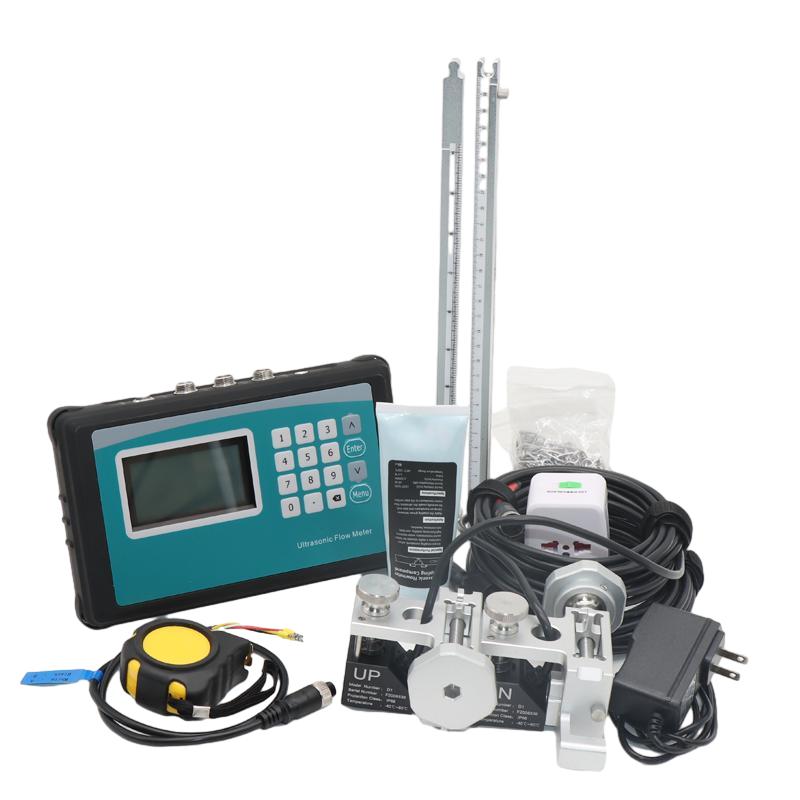Ultrasonic flowmeter installation requirements
2023-12-20
Ultrasonic flowmeter is a device used to measure the flow of fluid, which uses the propagation speed of ultrasonic waves to calculate the flow rate of fluid. The following are the general requirements for ultrasonic flowmeter installation:

Installation location selection:
The flow meter should be installed in a stable fluid flow area to avoid liquid vortices, eddies, or bubbles that affect measurement accuracy.
The installation position should allow the fluid to have enough straight pipe sections in front of and behind the measuring point to ensure stable fluid flow, which usually requires the installation of 10 times the diameter of the straight pipe section in front of and behind the meter.
Pipeline requirements:
The selection of the flowmeter should be adapted to the diameter range of the pipeline to ensure that the measuring range of the flowmeter matches the diameter of the pipeline.
The material of the flow meter should be matched with the pipe to ensure good acoustic propagation.
Temperature and pressure:
Considering the temperature and pressure range of the fluid, select the appropriate ultrasonic flowmeter model to ensure safe and reliable operation.
Sensor installation:
The sensor of the ultrasonic flowmeter should be installed on the center line of the pipeline to ensure the accuracy and reliability of the measurement results. During installation, the sensor should be kept parallel to the pipe axis to reduce the influence of fluid on the measurement results. At the same time, it should be ensured that a certain distance between the sensor and the inner wall of the pipeline is maintained to avoid affecting the measurement results.
Power and electrical wiring:
Provide a stable power supply and ensure that the cable is firmly connected to avoid electromagnetic interference.
Ensure that the electrical wiring of ultrasonic flowmeters complies with relevant safety standards and regulations.
Environmental Conditions:
Ensure that the environmental conditions of the installation location meet the working requirements of the flow meter, such as explosion-proof, anti-corrosion and other special environmental requirements.
Calibrate:
Calibrate the flow meter after installation to ensure accuracy. The calibration cycle should be carried out according to the manufacturer's recommendation.
Safety standards:
Comply with relevant safety standards and regulations to ensure that equipment is installed and used in accordance with local regulations and standards.
Avoid installing the flow meter in a position that may be subject to vibration or shock to prevent damage to the flow meter.
Regular maintenance:
Perform regular maintenance to clean the surface of the ultrasonic sensor to ensure that no deposits or dirt affect the measurement.
During the installation process, it is best to operate according to the specific ultrasonic flowmeter model and the installation manual provided by the manufacturer. If you have special requirements or questions, it is recommended to consult the Aister flow meter manufacturer or relevant professionals.

Installation location selection:
The flow meter should be installed in a stable fluid flow area to avoid liquid vortices, eddies, or bubbles that affect measurement accuracy.
The installation position should allow the fluid to have enough straight pipe sections in front of and behind the measuring point to ensure stable fluid flow, which usually requires the installation of 10 times the diameter of the straight pipe section in front of and behind the meter.
Pipeline requirements:
The selection of the flowmeter should be adapted to the diameter range of the pipeline to ensure that the measuring range of the flowmeter matches the diameter of the pipeline.
The material of the flow meter should be matched with the pipe to ensure good acoustic propagation.
Temperature and pressure:
Considering the temperature and pressure range of the fluid, select the appropriate ultrasonic flowmeter model to ensure safe and reliable operation.
Sensor installation:
The sensor of the ultrasonic flowmeter should be installed on the center line of the pipeline to ensure the accuracy and reliability of the measurement results. During installation, the sensor should be kept parallel to the pipe axis to reduce the influence of fluid on the measurement results. At the same time, it should be ensured that a certain distance between the sensor and the inner wall of the pipeline is maintained to avoid affecting the measurement results.
Power and electrical wiring:
Provide a stable power supply and ensure that the cable is firmly connected to avoid electromagnetic interference.
Ensure that the electrical wiring of ultrasonic flowmeters complies with relevant safety standards and regulations.
Environmental Conditions:
Ensure that the environmental conditions of the installation location meet the working requirements of the flow meter, such as explosion-proof, anti-corrosion and other special environmental requirements.
Calibrate:
Calibrate the flow meter after installation to ensure accuracy. The calibration cycle should be carried out according to the manufacturer's recommendation.
Safety standards:
Comply with relevant safety standards and regulations to ensure that equipment is installed and used in accordance with local regulations and standards.
Avoid installing the flow meter in a position that may be subject to vibration or shock to prevent damage to the flow meter.
Regular maintenance:
Perform regular maintenance to clean the surface of the ultrasonic sensor to ensure that no deposits or dirt affect the measurement.
During the installation process, it is best to operate according to the specific ultrasonic flowmeter model and the installation manual provided by the manufacturer. If you have special requirements or questions, it is recommended to consult the Aister flow meter manufacturer or relevant professionals.
Share To:
Previous Post:
News
- Why is the thermal gas mass flowmeter not affected by pressure strength and temperature?
- What to do when a thermal gas mass flow meter fails?
- How are thermal gas mass flow meters used? What are the applications?
- Under what circumstances is the gas measurement need to be regulated compensated vortex flowmeter
- Why Is The Aister Thermal Gas Mass Flowmeter So Popular ?
- Gas turbine flowmeter manufacturers explain their main advantages in measurement
- Gas turbine flowmeter manufacturer Aister instrument field experience summary
- Aister Instrument Empowerment Conference








